2023 ICCSINO Lithium Battery Anode Materials and Raw Materials Market Summit Forum and the
5th International Natural Graphite and Application Market Summit Forum Meeting Records
On April 13, 2023, the "2023 Lithium Battery Anode Materials and Raw Materials Market Summit Forum and the 5th International Natural Graphite and Application Market Summit Forum" hosted by ICCSINO was grandly held at the Shangri-La Hotel in Qingdao, Shandong.
As the world faces the dual pressures of energy conservation and emission reduction and the increasing shortage of petroleum resources, more and more countries are regarding the development of clean energy as an important way to revitalize their own industries and energy conservation and emission reduction. The new energy industry has finally ushered in vigorous development after many years of cultivation. In 2022, global lithium battery production will officially enter the TWh era, and the demand for lithium battery anode materials is also rising.
ICCSINO forecast data shows that the global lithium battery market demand for anode materials will reach 1.8 million tons in 2023, and the output of lithium battery anode materials is expected to exceed 3 million tons in 2025.
2023 will also be a year full of opportunities and challenges for the lithium battery anode material market. This rising cycle has brought about explosive growth in production capacity in all aspects of the industry. According to ICCSINO statistics, China's effective production capacity of lithium battery anode materials will reach 4.5 million tons in 2023. At the same time, the lithium battery anode material industry chain will face more tests, and crises are often accompanied by greater opportunities. Companies with strong graphitization cost control capabilities will gain greater market share; raw material cost pressure will push anode material companies to increase raw material development efforts and expand resource selection; future raw material market anxiety for needle coke and petroleum coke will give natural graphite anodes bring more opportunities; the convergence of traditional carbon anode material products will drive the industry's intensity in developing new technologies, such as silicon anodes, hard carbon anodes, etc.
In addition, in the next few years, the demand for the entire lithium battery anode material market will continue to maintain a sustained growth trend. How will the lithium battery anode material pattern be interpreted in the next few years? When will the de-Chinaization of the United States have a substantial impact on the Chinese anode material market? whether needle coke’s supply advantage in the lithium battery anode material raw material market can be sustained, etc.
This meeting brought together domestic and foreign mainstream lithium battery anode material companies, raw material companies such as needle coke, petroleum coke, and natural graphite to discuss the current status of the anode material market, silicon-based anode applications, coke raw material process technology, and the graphitization development trend of anode materials. and other topics were discussed and exchanged in depth.
At the beginning of the meeting, Lian Ping, general manager of ICCSINO, Yu Wei, mayor of Yuanshang Town of Laixi City, and Jia Tao, deputy mayor of Laixi Municipal People's Government, delivered speeches respectively to welcome more than 800 guests from upstream and downstream lithium battery anode materials to the meeting.
At the meeting, General Manager Lian Ping of ICCSINO first shared the latest data on the lithium battery anode industry chain with the guests attending the meeting. Mrs. Lian first introduced the basic overview, main service industries and business of ICC ICCSINO to the guests present, and then showed the overall statistics of anode material output in the past 10 years: In 2022, domestic lithium battery anode materials will be 1.415 million tons, a year-on-year increase of 68%; of which the output of natural anode materials accounted for 18.2%. Although after explosive growth throughout 2022, the lithium battery anode material market has entered the off-season in the first quarter of 2023, the output in January-February still increased by more than 40% yearly, but compared with the industry's expansion of production capacity, the increase is still large gap.
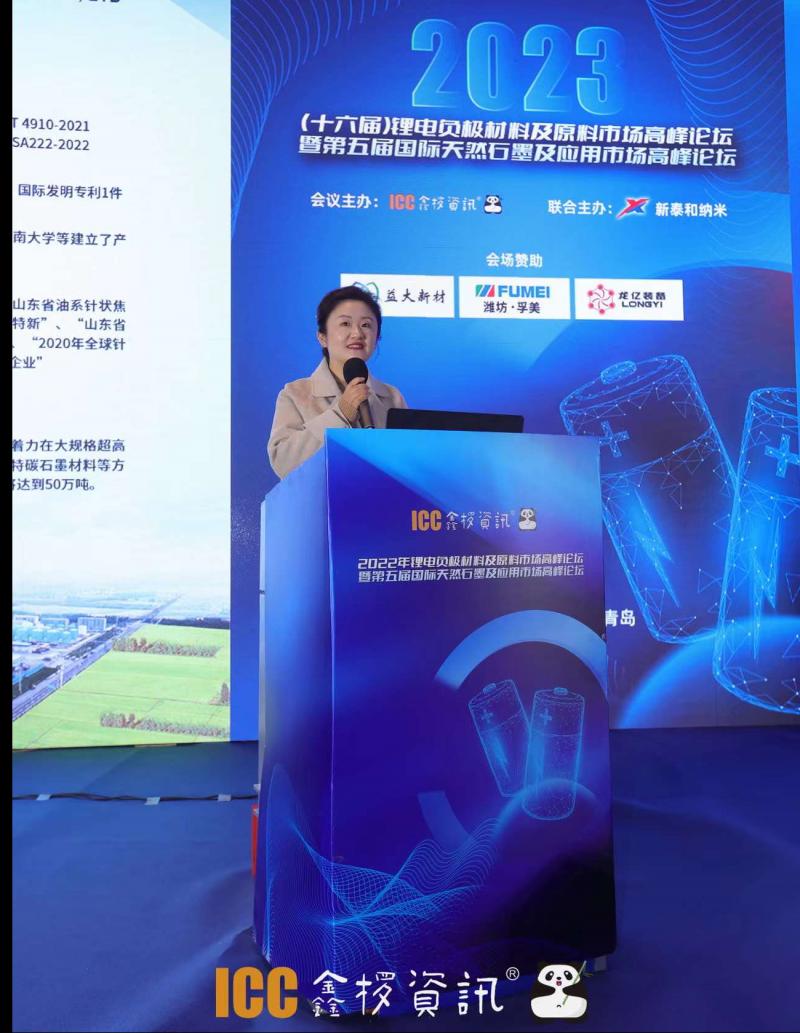
Secondly, Mrs. Lian also talked about the market share of global anode companies in 2022, pointing out that the current domestic anode market is still in a situation where the strong are always strong and dark horses emerge, and showed the artificial graphite, oil-based/coal statistics compiled by ICCSINO This is the price trend of the global anode materials and raw material markets, including raw coke, flake graphite, spheroidized graphite, etc., from January 1, 2020 to the present.
Finally, Mrs. Lian made a positive outlook on global battery production and anode material demand in the next three years.
Chairman Wang Jionghui of China Minmetals (Heilongjiang) Graphite Industry Co., Ltd. shared with the guests the "Challenges and Opportunities of the Development of Natural Graphite Industry".
Chairman Wang first reviewed the anode material market last year. He said that the global and domestic demand growth for new energy vehicles and energy storage has driven the prices of anode materials and raw materials to remain high for a long time, and the demand for "battery minerals" has risen. to grow rapidly. However, last year's high demand and high prices for anode materials led to a surge in supply and triggered industry concerns about structural overcapacity caused by the wave of production expansion. Entering 2023, with the country's counterattack on new energy vehicle subsidies and price reductions for fuel vehicles, China's new energy vehicle sales growth rate has declined significantly. In order to take advantage of the bidding war, domestic and foreign new energy vehicle companies have also launched a wave of price cuts.
Chairman Wang said that with the decline in demand, the market where supply was less than demand last year is no longer the case. The price of lithium will plummet at the end of 2022 and has now fallen by 50%. The entire battery industry is under heavy inventory pressure, and manufacturers are cautious in stocking up. They are gradually entering the stage of reducing production and destocking, and the output of batteries and raw materials has also fallen in response. He also mentioned that due to the international trade situation, geopolitics, and the downward trend of the global economy, as the country with the largest reserves of natural graphite resources, the domestic natural graphite industry is also facing long-term threats and challenges; he also talked about the future of the graphite industry from the field of environmental protection, Although the anode material industry currently seems to be experiencing some setbacks, Chairman Wang still mentioned the opportunities in the graphite industry. For example, the demand for EV batteries is still strong, energy storage growth is expected in the future, and the natural graphite anode composite "dual carbon" strategy has obvious advantages.
Finally, Chairman Wang also introduced to everyone the green, low-carbon natural graphite industry chain that China Minmetals is building. He said that scientific and technological progress will be the biggest development opportunity for the graphite industry, and the natural graphite industry will effectively promote "carbon reduction" and "carbon control."
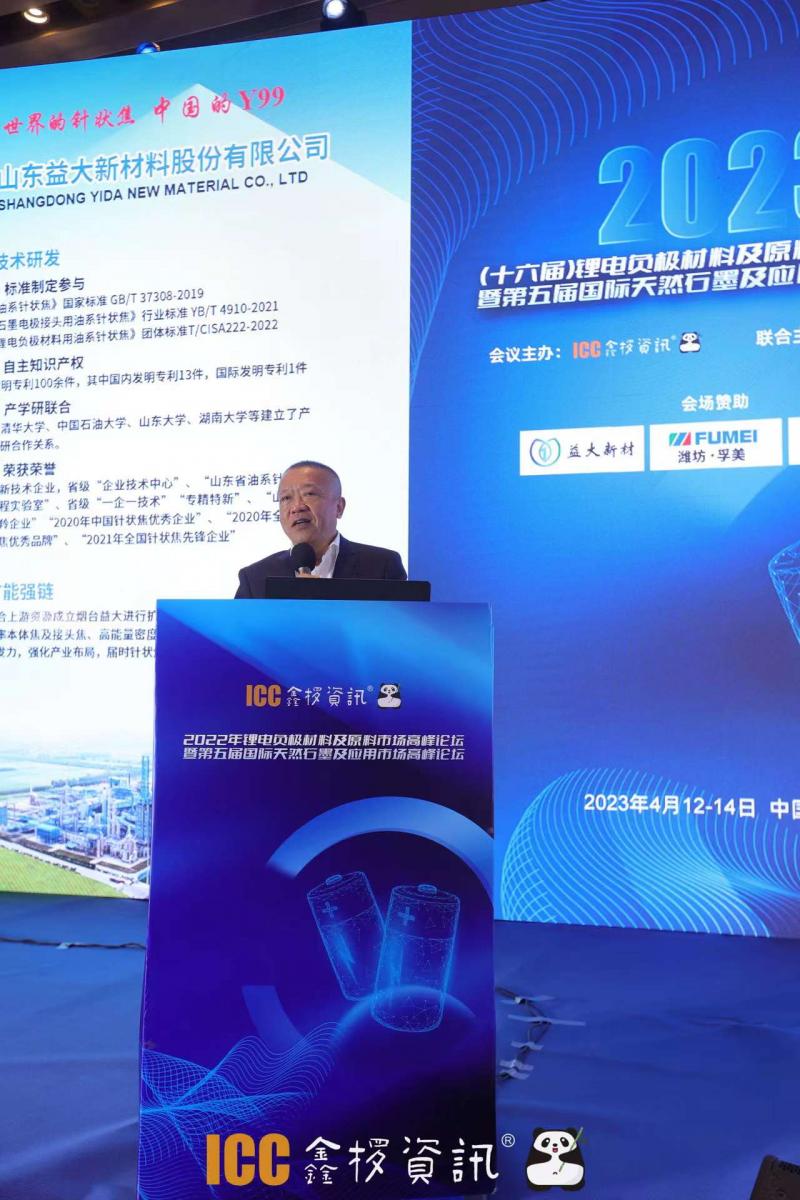
Chairman Yue Min of Zhejiang Carbon-One New Energy Co., Ltd. shared with the guests the "Current Status and Trend Judgment of Anode Material Development". He first pointed out the current situation faced by the domestic lithium battery industry - the lithium carbonate market continues to decline, the average price exceeds industry expectations, and the operating rate of anode materials is less than 50%. Chairman Yue believes that in the next 3-5 years, the production capacity layout will be seriously excess. Fierce competition in the new energy industry will become the norm.
Yue also criticized the five major problems currently faced by the anode material industry, including: serious oversupply; serious homogeneity, price wars and involution within the industry; manufacturers do not pay attention to quality and have no bottom line, only focusing on price; Futurism is prevalent and there is a lack of independent innovation capabilities; although the investment is large, the forward-looking layout based on the future is insufficient.
Yue then put forward his own thoughts and opinions on lithium battery anode materials, artificial anode material raw materials, artificial graphite graphitization technology, sodium battery anode materials and the impact of the American IRA on China's anode material industry.
Yue also put forward his own views on what kind of company can become the leader in the industry in the future: "Deeply cultivate a field, focus on professionalism, innovation, high-quality development, etc..." Chairman Yue's words, Many guests sitting in the audience nodded their heads.
He finally introduced Carbon One’s core capabilities that differentiate it from its competitors from three aspects: technology, intellectual property layout, and production base layout.
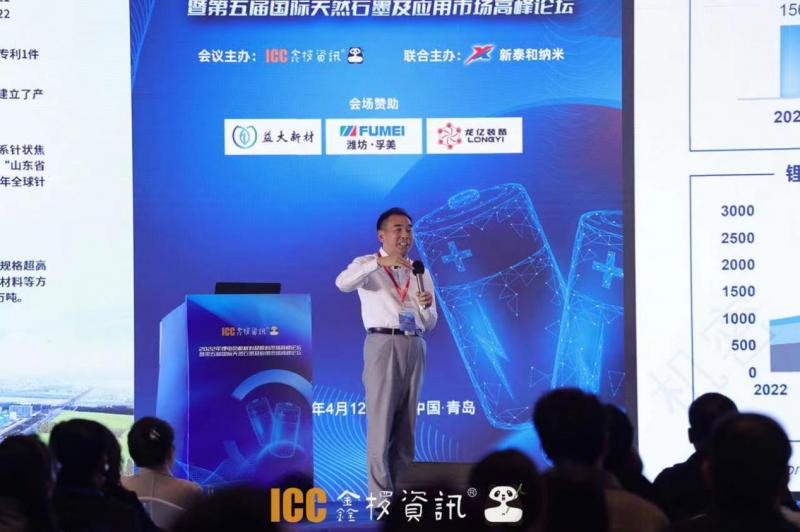
Dr. Wang Kun from Qingdao Xintaihe Nano Technology Co., Ltd. shared with the guests the "current status and trends of development of high energy density natural anode materials".
Dr. Wang first gave everyone a basic introduction to Xintaihe Nano Technology Co., Ltd., including the main business of Xintaihe Energy and Xintaihe Nano, as well as the company's overall structure, corporate culture, research laboratories, product matrix, etc.
Subsequently, Dr. Wang shared with the guests on the development of high-energy-density natural graphite and high-density artificial graphite anode materials, including natural graphite surface modification technology, carbonization, purification, material composite, secondary granulation, Development ideas including split processing, as well as plans for raw material screening, packaging process optimization and composite product development for artificial graphite.
He said that high energy density, fast charging and low cost are the development trends of graphite anode materials.
In addition, Dr. Wang also talked about the technical problems and solutions of high-energy-density biomass hard carbon anodes as well as the key technologies mastered by Xintaihe.
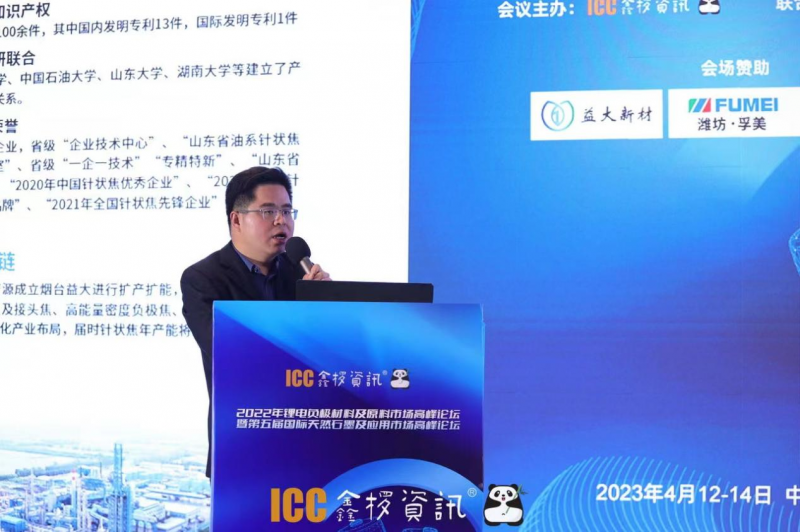
Dr. Lin Shaoxiong from Gotion Hi-Tech Power Co., Ltd. shared with the guests "Some thoughts on the application of graphite anode materials in lithium-ion batteries".
He first started talking about the structure of lithium-ion batteries and the anode materials used, mentioned the difference in the cost structure of lithium iron carbonate batteries and NCM batteries, and compared the performance of all anode materials, including their advantages, disadvantages and future prospects. Development direction, among which low cost is the development goal of almost all anode materials.
Dr. Lin also discussed the application trends of graphite anode materials, introducing in detail the physical structural characteristics of high-energy graphite and ways to increase energy density.
He then introduced fast-charging graphite and long-cycle graphite, and deconstructed the problems of natural graphite.
Finally, Dr. Lin said in the conclusion that the development of graphite (artificial and natural) anode material products has made great progress in recent years, and there will be more demand in the directions of energy density, long cycle, fast charging performance, etc.; The performance rules and mechanisms of graphite anode products, standardization construction, product monitoring and identification, and recycling and reuse still need to be further strengthened; graphite anodes are beginning to be in a state of overcapacity, and more attention should be paid to high quality, high performance, and technology cost reduction. development and research.
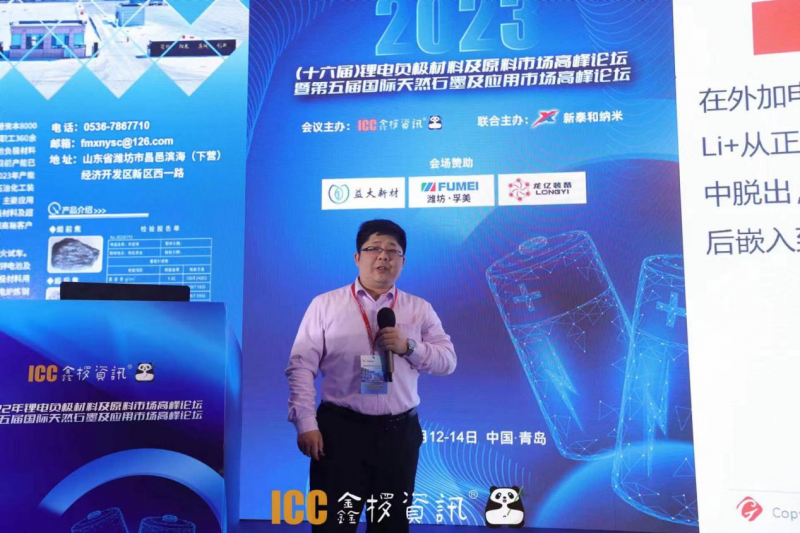
Chief Engineer Wu Zeyi of Sichuan Jinhuineng New Materials Co., Ltd. shared with the guests on "Development and Preparation of Lithium-ion Battery Anode Materials".
He first introduced himself to the guests present, and introduced Jinhuineng’s three production bases and two planned production bases. And Jinhuineng’s products include graphite anodes, silicon-carbon anodes and sodium-ion anodes. Subsequently, Wu explained to the guests the development history of China's anode material industry in the past thirty years.
Wu also discussed the ideas for developing graphite anode materials from the perspective of graphite atomic structure, crystal structure, and microstructure, and introduced the three major needs of the graphite market.
Finally, he shared the production process flow of artificial graphite anode materials and the key steps in the production of anode materials, as well as his thoughts on how granulation and graphitization can improve efficiency and improve the working environment.
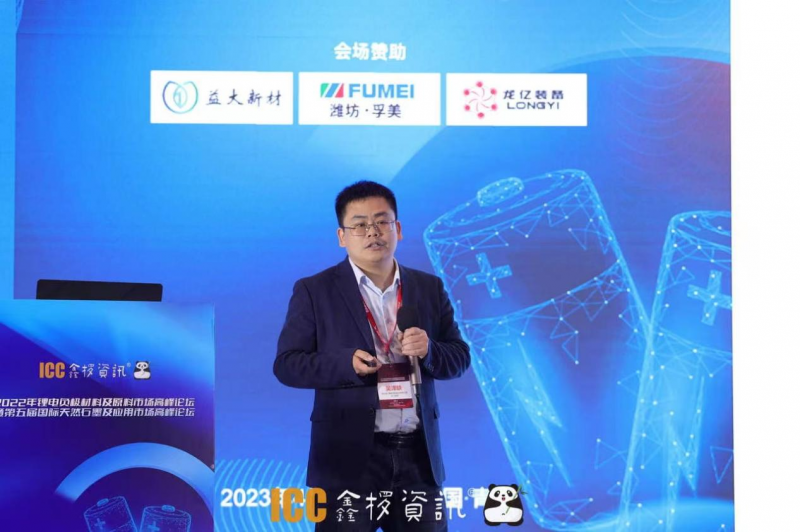
The morning meeting of the summit ended with applause from the audience, and the afternoon meeting will also discuss other issues of anode materials.
After the morning meeting on April 13, the eight guest speakers in the afternoon also shared their speech topics with the participants one by one.
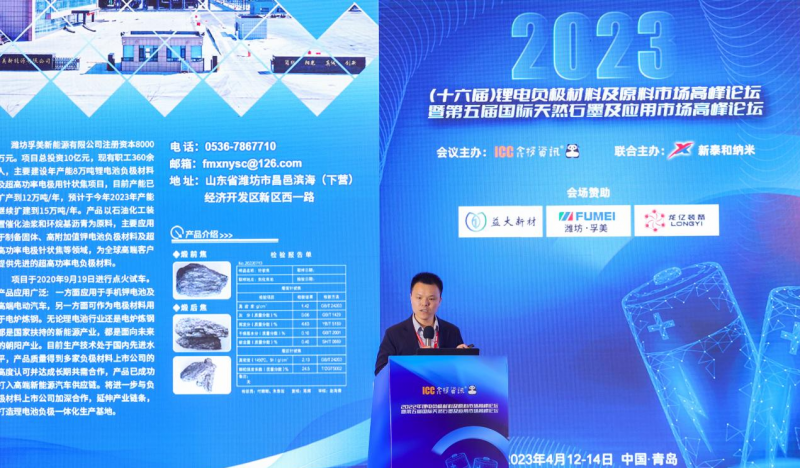
Han Tuanhui, deputy director of the Anode Materials Department of the Research Institute of BTR New Materials Group Co., Ltd., delivered a speech on "The Current Situation and Future Development Trends of the Lithium Battery Anode Materials Market."
Minister Han first introduced the current situation of the graphite anode material market at China and overseas. Subsequently, he made a summary analysis of the current situation and problems faced by the natural graphite market and the current situation of the artificial graphite anode material market.
He believes that the main problems faced by natural graphite are its large expansion rate, poor electrolyte compatibility, and poor rate performance. In this regard, he proposed an industry improvement strategy—optimizing the electrolyte formula, insisting on continuous innovation of material technology, and optimizing application plans.
In terms of artificial graphite, low energy density, serious product homogeneity, high production costs and long processes are the main problems faced by the industry. In this regard, he believes that companies need to take high energy density, high-rate fast charging and low-cost long cycle as the development direction of artificial graphite products.
Later, Han shared the research and development direction of graphite anode modification under the current severe situation of the industry. Including asphalt modification, asphalt microstructure control, coke raw material selection, doping and polymer modification, etc. In addition, he also shared cases of high-value utilization of micropowders, using high-energy-density products and conductive graphite as examples.
Finally, Minister Han also briefly introduced the situation of BTR Central Research Institute to the guests, including the positioning of the institute, team composition, intellectual property rights owned and technical standards issued. At the same time, he also looked forward to the future of the institute.
Professor Zhou Xiangyang from Central South University shared with the guests on the topic "Cost reduction strategy for the entire industry chain in the lithium battery anode manufacturing process".
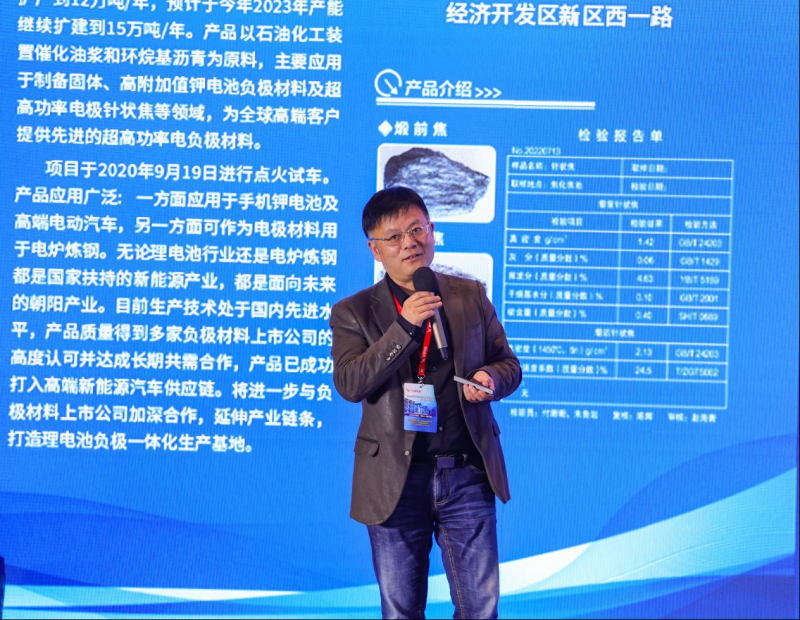
Professor Zhou started by talking about the current situation of the lithium battery industry and the anode material industry. He said that as production capacity is gradually released, preferential electricity price policies are canceled in various places, and "new and old players continue to increase their investment," the competition in the lithium battery anode industry will become increasingly cruel. In addition, Professor Zhou also mentioned that the homogeneity of products in the industry is serious, and the differentiation of equipment and product quality is no longer obvious.
However, Professor Zhou believes that before 2025, there will be no problem with the development prospects of the lithium battery industry. Featured products with technical content will stand out; competition for conventional materials will become fierce, and low cost is king; OEMs with incomplete/homogeneous production lines will have difficulty; anode shipments will start in the third quarter of 2023 or will begin to grow, and profits will be very low; mergers and acquisitions will begin in 24-25 years, and the anode market structure may open up; resources, technology and capital will gradually concentrate.
Professor Zhou also believes that there will be fierce competition around petroleum coke in the industry in the future, which is mainly caused by the supply and demand situation of petroleum coke. Secondly, Professor Zhou also expressed his views on the cost reduction of carbon anodes for lithium batteries and the low-cost development of silicon anodes.
Finally, Professor Zhou also clarified ideas for the survival of Anode companies and the goal of sustainable development.
Vice President Liao Hu from the Research Institute of Shandong Yida New Materials Co., Ltd. shared with the guests on the topic of "Production Application, Development Trend and Cost Response of Needle Coke for High-end Anode".
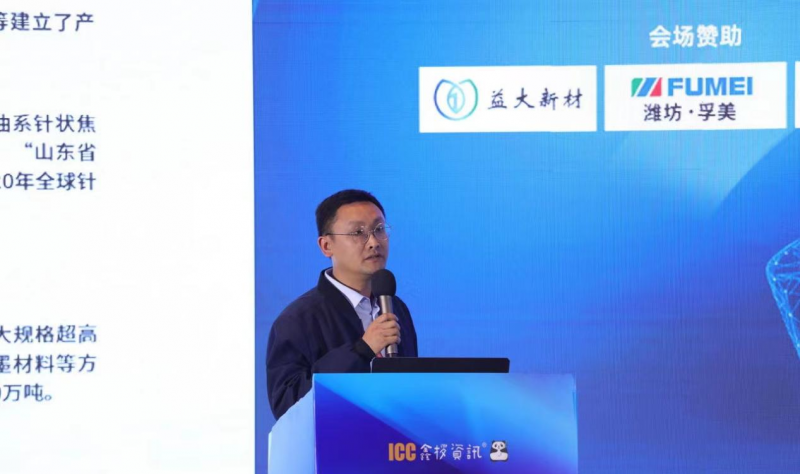
Liao first explained the current production and application of anode needle coke of Shandong Yida New Materials, listing the FCC process that produces more ethylene + propylene, the FCC process that produces gasoline + propylene, and the FCC process that produces more propylene. Manufacturing process.
Later, Liao also analyzed the current development trend of Anode needle coke, especially the current situation where the downward market of Anode batteries is more stringent.
Dean Liao does not believe that the recovery of the anode battery market will lead to an increase in the share of needle coke in anode gel lithium. He believes that needle coke currently accounts for 15% of the market, which is already quite good. Regarding how to capture 15% of the market, President Liao believes that efforts must be made to reduce prices, stabilize product quality, increase capacity and processing performance.
Regarding the cost response strategy of Jiao Enterprises, President Liao believes that the first thing that enterprises should pay attention to is that quality is the foundation of the enterprise; reducing costs at the expense of quality outweighs the gains; secondly, on the basis of downstream recognition, it is appropriate to relax individual indicators. An effective way; then don’t get too entangled in the field where ordinary coke can be replaced; and revolutionary and targeted redefinition of Anode coke; and develop corresponding new products; finally, don’t care whether it is still called needle coke, it’s a big deal Maybe it really can no longer be classified as needle coke.
Regarding the development trend of needle coke after 2023, President Liao believes that events such as production capacity withdrawal, production line conversion, reorganization and integration will gradually occur in the industry.
Finally, he also introduced the enterprise situation of Shandong Yida.
Zheng Zhifeng, doctoral supervisor and distinguished professor of Xiamen University, shared with the guests on "Advanced Carbon-Based Composite Electrode Materials and Their Applications".
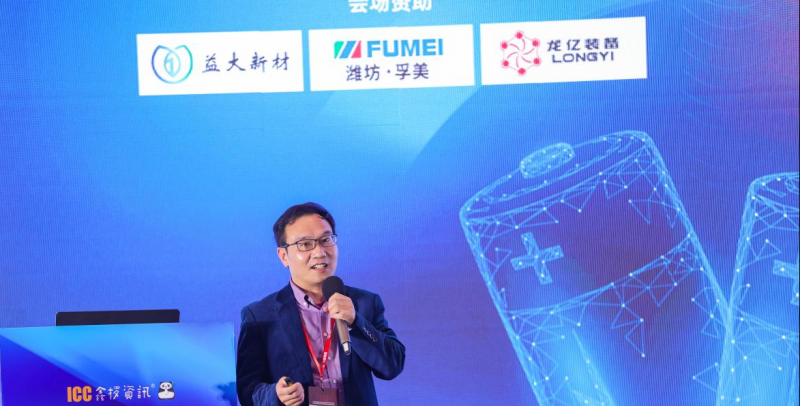
In his speech, he first gave a detailed explanation of the background of the new energy industry and the lithium battery anode industry. Among them, he focused on the future development direction and demand trends in the fields of energy storage, hard carbon, lithium batteries, and sodium battery anodes.
Subsequently, Professor Zheng discussed the construction and performance of flexible carbon fiber lithium/sodium metal composite electrode materials, the research on the active lithium consumption mechanism of lithium-poor composite anode Li/CNF, oxygen-rich flexible carbon paper with high performance lithium metal anode, and oxygen-rich flexible carbon paper with high High-performance sodium metal anode, high-performance lithium metal composite anode, nickel/cobalt oxide nanoneedle array-modified carbon fiber film to regulate uniform lithium metal deposition, and ultra-high voltage window U-hollow MnCo2O4@carbon nanofiber composite electrode, etc., for The guests present gave explanations.
In addition, Professor Zheng also introduced the key technologies for carbon paper preparation. He said that based on the market demand, technical requirements and structural performance of fuel cell gas diffusion layer carbon paper, it is of great strategic significance in China to develop key carbon paper preparation technologies with independent intellectual property rights and break through foreign product and technology monopolies.
Fang Yongjin, doctoral supervisor and distinguished researcher at Wuhan University, shared with the guests on "Research on the Sodium Storage Properties of Hard Carbon Anodes".
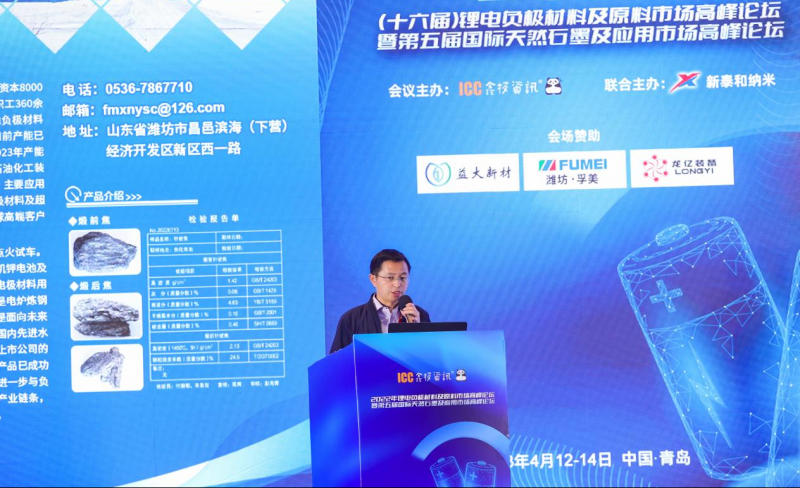
In the speech, Fang first elaborated on the research background. He said, "Limited by lithium resources, it is difficult for lithium-ion batteries to support the two major industries of electric vehicles and large-scale energy storage at the same time. It is particularly important to develop new electrochemical energy storage systems that are clean, cheap, and rich in resources."
Therefore, as a potential high energy density material, it is rich in resources, low in price, and widely distributed, supporting large-scale applications.
Sodium-ion batteries may become a new development direction in the field of energy storage.
Researcher Fang also gave a detailed explanation on the reaction mechanism of sodium carbon intercalation, the research on the sodium intercalation mechanism of hard carbon and the development of high specific energy hard carbon anode materials.
Finally, Researcher Fang explained the various preparation methods of hard carbon, such as the pyrolysis of biomass to synthesize hard carbon and the pyrolysis of polymer/organic small molecules to synthesize hard carbon.
Mr. Chen Ming from Honeycomb Energy Technology Co., Ltd. shared with the guests the "current situation and prospects of the new energy vehicle and power battery market".
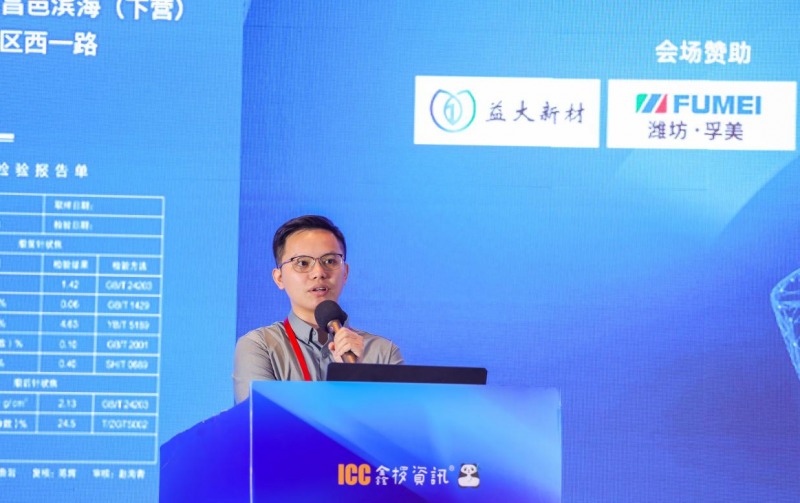
Mr. Chen started with an overview of the global new energy vehicle market, and explained and compared the operation of the new energy vehicle markets in China, the European union and the United States. According to statistics from ICC ICCSINO, the sales of new energy vehicles will continue to grow in the next three years. By 2026, China's new energy vehicle sales will reach 15.8 million, Europe 5.12 million, and the United States 4.82 million.
Regarding the problem of domestic oversupply, Mr. Chen believes that domestic companies can develop abroad, for example, they can try to enter the European and American markets.
Then, Mr. Chen analyzed the global power battery market. He said that although the installed capacity is still dominated by Chinese companies, the installed capacity of Japanese and Korean companies has also increased significantly. In addition, in terms of the distribution of power batteries, lithium iron phosphate has obvious cost competitive advantages compared with NCM batteries.
In addition, regarding the question of whether the current price of lithium carbonate can stop falling, Mr. Chen believes that although it is still difficult to stop the fall, the room for the decline of lithium carbonate is already very limited.
Director Peng Youlin of Tianjin R&D Center of Xinjiang China Carbon New Materials Technology Co., Ltd. shared with the guests on the topic of "Application and Development of Pitch-based Carbon Materials".
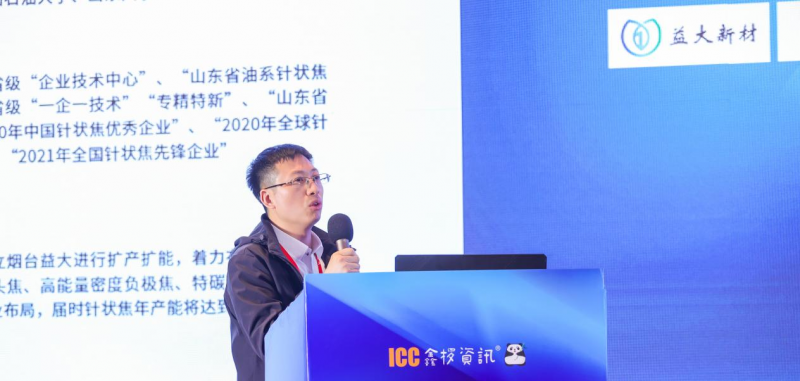
Peng first introduced the situation of Xinjiang China Carbon New Material Technology Co., Ltd. The director also introduced Xinjiang Medium Carbon’s coated pitch products, the development of general-grade spinning pitch, and the development of pitch for hard carbon Anodes.
According to him, spinning pitch has excellent spinnability. The original fiber can maintain its original shape after oxidation, has no melting phenomenon, does not stick, has good flexibility and weavability, and the fiber that does not melt after oxidation is easy to carbonize.
In addition, Director Peng also compared three different technical paths for hard carbon. Among them, the biomass-based route has moderate performance, wide source of materials, and relatively suitable cost; the synthetic polymer precursor route such as phenolic resin has better performance, but the cost is relatively high; the fossil fuel route such as anthracite and asphalt has low cost, but the output is hard The performance of carbon materials is average.
Finally, Dr. Wang Zhen, general manager and senior engineer of Shandong Sina New Material Technology Co., Ltd., shared with the guests on the topic of "Research and Problems of Nano-Si Anode Materials Based on Magnesia Thermal Reduction".
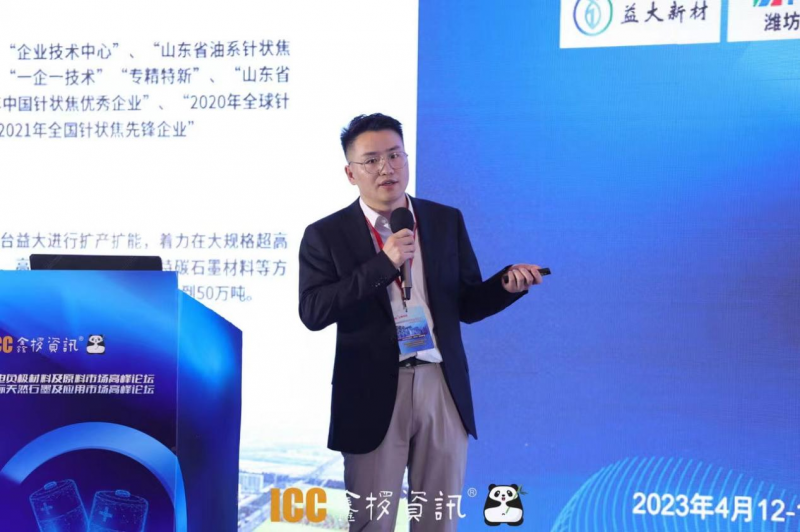
Dr. Wang first admitted that the market for nano-silicon or silicon-based anode materials is not yet mature. Compared with graphite materials, nano-silicon can be said to be still in its infancy. Moreover, due to preparation costs and market confidence issues, the application of nano-silicon is still limited to a certain extent.
Then, Dr. Wang introduced the research and development progress of magnesia thermal reduction through him and his team, and talked about improving the chemical process of magnesia thermal reduction through raw material screening, pickling control, molten salt selection and other means. And ultimately, the cost can meet the consumption level of middle and above; the performance reaches above the level of similar products; and the production capacity can achieve large-scale production.
Finally, Dr. Wang also shared with everyone the members of his core R&D team, demonstrating the team's R&D capabilities + the impressive results achieved in the past few years. He also introduced the platform advantages and expanded products that Shandong Silicona can provide.
The summit also awarded the 2023 Excellent Suppliers in the Natural Graphite Industry, High-Quality Equipment Suppliers in the Natural Graphite Industry, the Most Brand Value Award in the Anode Material Industry, and the Most Development Potential Award in the Anode Material Industry. The list of award-winning companies is as follows:
The winning companies for outstanding suppliers in the natural graphite industry in 2023 are:
Changyi Senhui New Materials Co., Ltd.
Heilongjiang Baoquanling Nongken Yixiang New Energy Materials Co., Ltd.
Heilongjiang Moli New Materials Co., Ltd.
Jixi Changyuan Mining Co., Ltd.
Madagascar awa Graphite
Qingdao Luowei New Materials Co., Ltd.
Qingdao Qingbei Carbon Products Co., Ltd.
Qingdao TEDA China Resources New Energy Technology Co., Ltd.
Qingdao Taidongrui New Energy Materials Co., Ltd.
Qingdao Xintaihe Nanotechnology Materials Co., Ltd.
China Minmetals (Heilongjiang) Graphite Industry Co., Ltd.
CNBM Heilongjiang Graphite New Materials Co., Ltd.
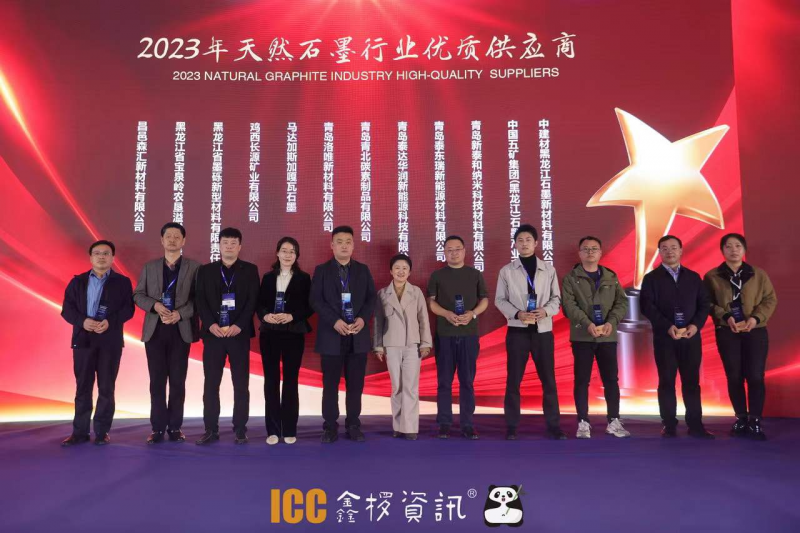
The winning company for high-quality equipment suppliers in the natural graphite industry in 2023 is
Jiangsu Aokai Environmental Technology Co., Ltd.
Shandong Xinhai Mining Technology Equipment Co., Ltd.
Shanghai Lidian Solenoid Valve Co., Ltd.
Shanghai Qiangniu Packaging Machinery Equipment Co., Ltd.
Weifang Jingjing Powder Engineering Equipment Co., Ltd.
Weifang Zhuiri Magnetic Technology Co., Ltd.
Yantai Jinpeng Mining Machinery Co., Ltd.
Zhejiang Yilian Crushing Equipment Co., Ltd.
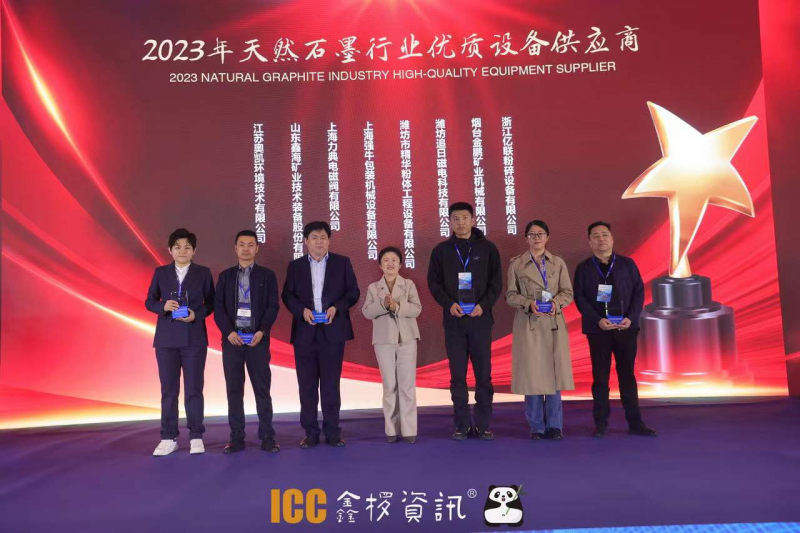
The winners of the 2023 Most Valuable Brand Award in the Anode Material Industry are:
BTR New Materials Group Co., Ltd.
Shanghai Shanshan Technology Co., Ltd.
Jiangxi Zichen Technology Co., Ltd.
Hunan Zhongke Shinzoom Graphite Co., Ltd.
Shijiazhuang Shangtai Technology Co., Ltd.
Fujian XFH New Energy Materials Co., Ltd.
Guangdong Dongdao New Energy Co., Ltd.
Inner Mongolia Snow New Material Technology Co., Ltd.
Hebei Kuntian New Energy Co., Ltd.
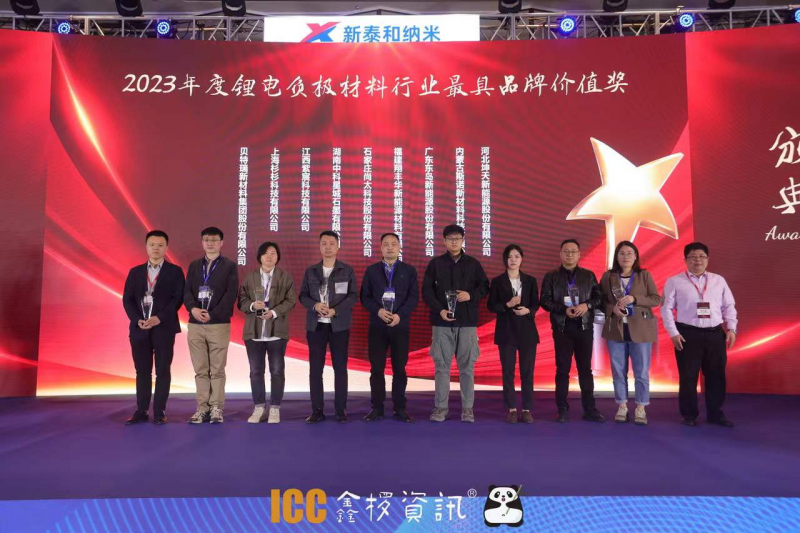
The winners of the 2023 Anode Material Industry’ s Most Development Potential Award are:
Qingdao Xintaihe Nanotechnology Co., Ltd.
Sichuan Jinhuineng New Materials Co., Ltd.
sotong development co., ltd.
Shenzhen Xinao New Energy Technology Co., Ltd.
Carbon One New Energy Group Co., Ltd.
Hunan Yongli New Material Technology Co., Ltd.
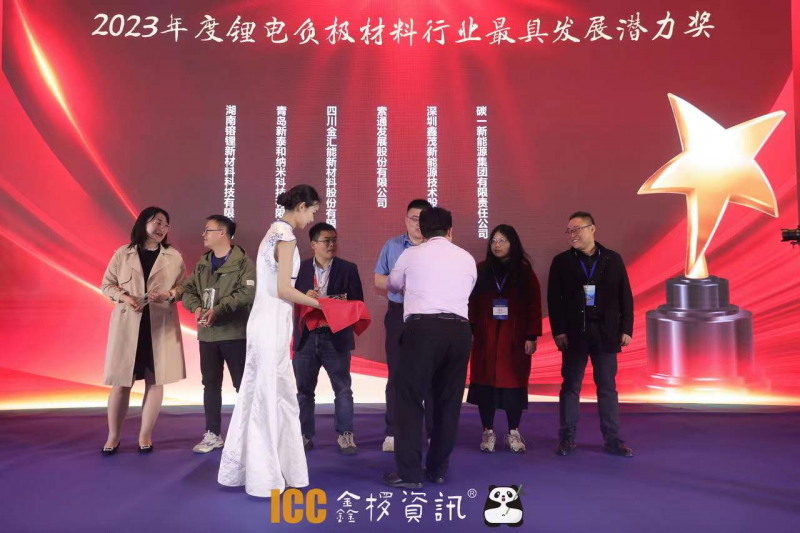
This summit gathered more than 500 upstream and downstream companies related to the industry chain, with more than 800 participants. Through technology sharing, business negotiations, exhibitions, brainstorming, etc., it promotes the R&D update, technology iteration, supply and demand cooperation, and industrial progress of the entire lithium battery anode industry chain, and strengthens academic research, process practice, equipment application, and industrialization construction, etc. Exchanges in various aspects have established a good communication platform for the in-depth integration of the lithium battery anode industry. Let us look forward to the 2024 Anode Materials Summit together, and see you next year!
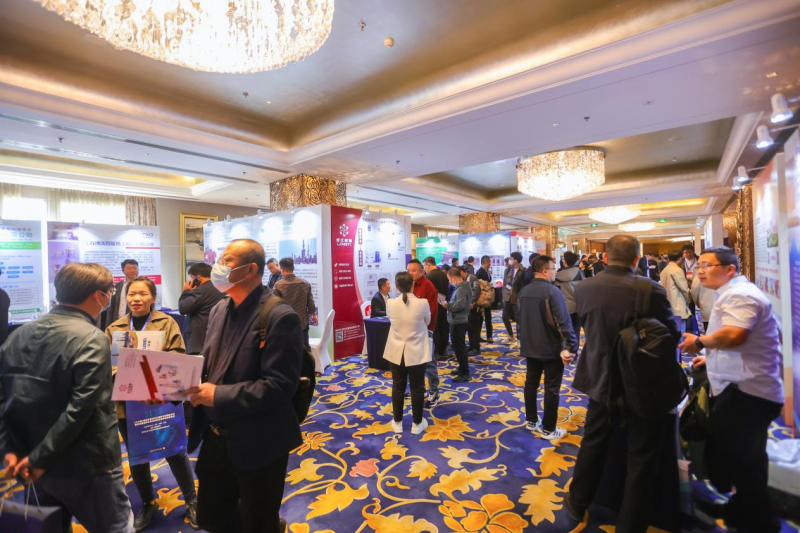

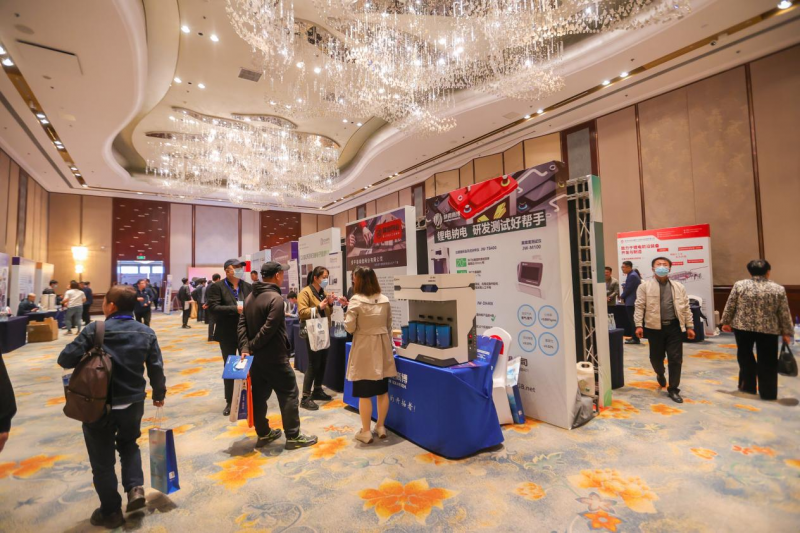
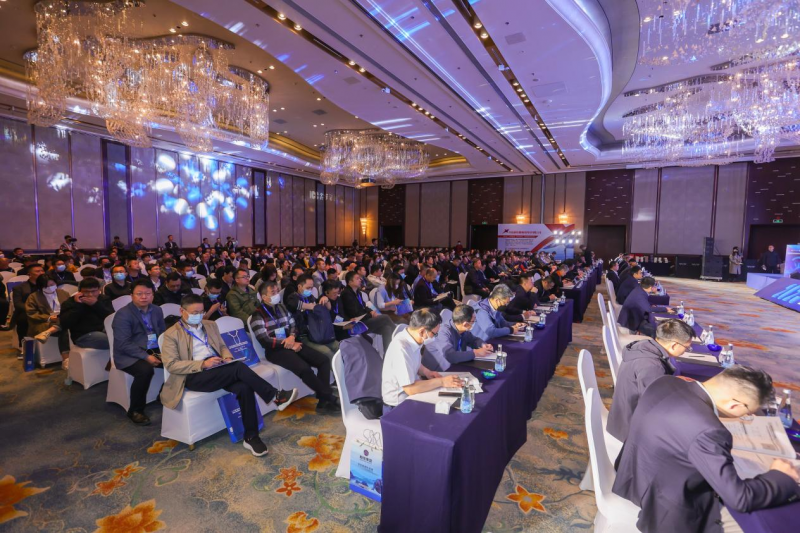




 CONTACT US
CONTACT US ICC APP
ICC APP
